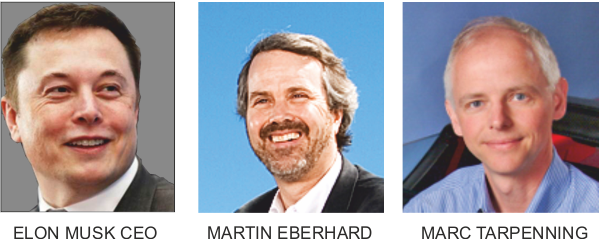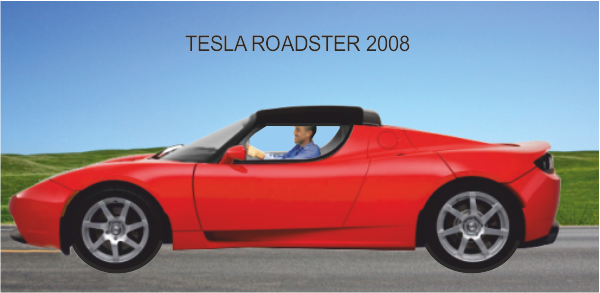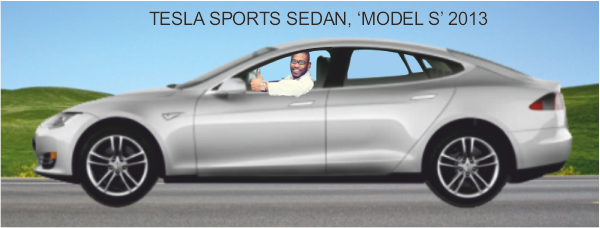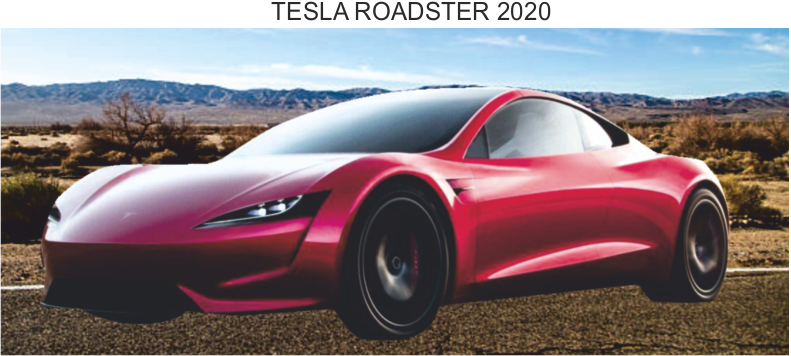| CLICK HERE FOR INDEX PAGE |
| |
| TESLA (TESLA MOTORS) |
V.Ryan © 2018-2022 |
| |
| PDF FILE - CLICK HERE FOR PRINTABLE WORKSHEET |
| |
| PDF FILE - TESLA - Boxed Learning Exercise |
| |
| Tesla is one of the best known automotive manufacturers in the world, even though it was only founded in January 2003, in California. Its popularity is based on the use of cutting edge technology and the aim to make electric cars commonplace. The company is also known for its development of energy storage systems and solar panels. |
| |
|
|
| |
| The Chief Executive Officer (CEO) is the charismatic Elon Musk, although the original company was founded by Martin Eberhard and Marc Tarpenning . Musk was one of the original major investors, having made his money, as a cofounder of PayPal. All three aim to develop and manufacture efficient and desirable electric cars, at an affordable price. |
| |
 |
| |
| Most electric cars are small and lack style. However, Tesla’s approached to the design of electric cars was different and set them aside as innovative. Their first commercial electric car, was a sports car called the ‘Roadster’ and went on sale in 2008. It was followed in 2013 by the sports sedan called the ‘Model S’, with its aluminium construction. Every effort has been made to ensure its lightweight configuration. The car has a range of 200 miles, before a 75 minute recharge is necessary. The model is regarded by many, as one of the fastest sedans manufactured, with a responsiveness that surpasses conventional sports cars. Claims have been made that it is more energy efficient than hybrid cars. |
| |
 |
| |
|
|
| |
| Tesla use electric motors, as research has shown that in comparison to other ‘engines’, including hydrogen engines, electric motors are more efficient. The batteries that store the ‘energy’, can be recharged by an alternative energy source, if available. Tesla are establishing a closed loop system, for the recycling of their batteries, although at the moment 60% of each battery is recycled. All this is attractive to environmentally friendly, potential customers. |
| |
| Tesla’s success is part due, to the way the existing automotive industry works. Car manufacturers do not make all the components to a vehicle. They tend to use component manufacturers. Tesla did not need to set up an entire factory, manufacturing every part of their vehicle, they simply needed to set up a supply chain and an assembly plant. Today, Tesla relies on the enormous size of its hi-tech plants, to return economies of scale, resulting in competitively priced electric vehicles. Their factory in California, is one of the largest in the world and operates one of the most automated manufacturing systems. They invest heavily in developing and maintaining a skilled workforce, specific to their specialised manufacturing needs. By the end of 2018, they aim to be manufacturing 500,000 cars at their Californian plant. |
| |
 |
| |
|
|
| |
Tesla believe that there is a positive future for their electric cars. Governments around the world are turning their attention to pollution, caused by the internal combustion engine and ways of reducing it. Electric vehicles are one of the most likely solutions.
An important factor is the electrical supply grid, which is becoming greener, as more alternative energy sources, such as wind power, are utilised. Life Cycle Energy Analysis, shows that electrically powered cars are greener than petrol / diesel powered cars. Further to this, it is likely that closed loop recycling systems, will be established to deal with batteries, at the end of their life cycle. Research shows that the carbon footprint of electric cars, is less than petrol and diesel vehicles. |
| |
 |
| |
| CLICK HERE FOR PRODUCT DESIGN INDEX PAGE |
| |
|
| |
|



